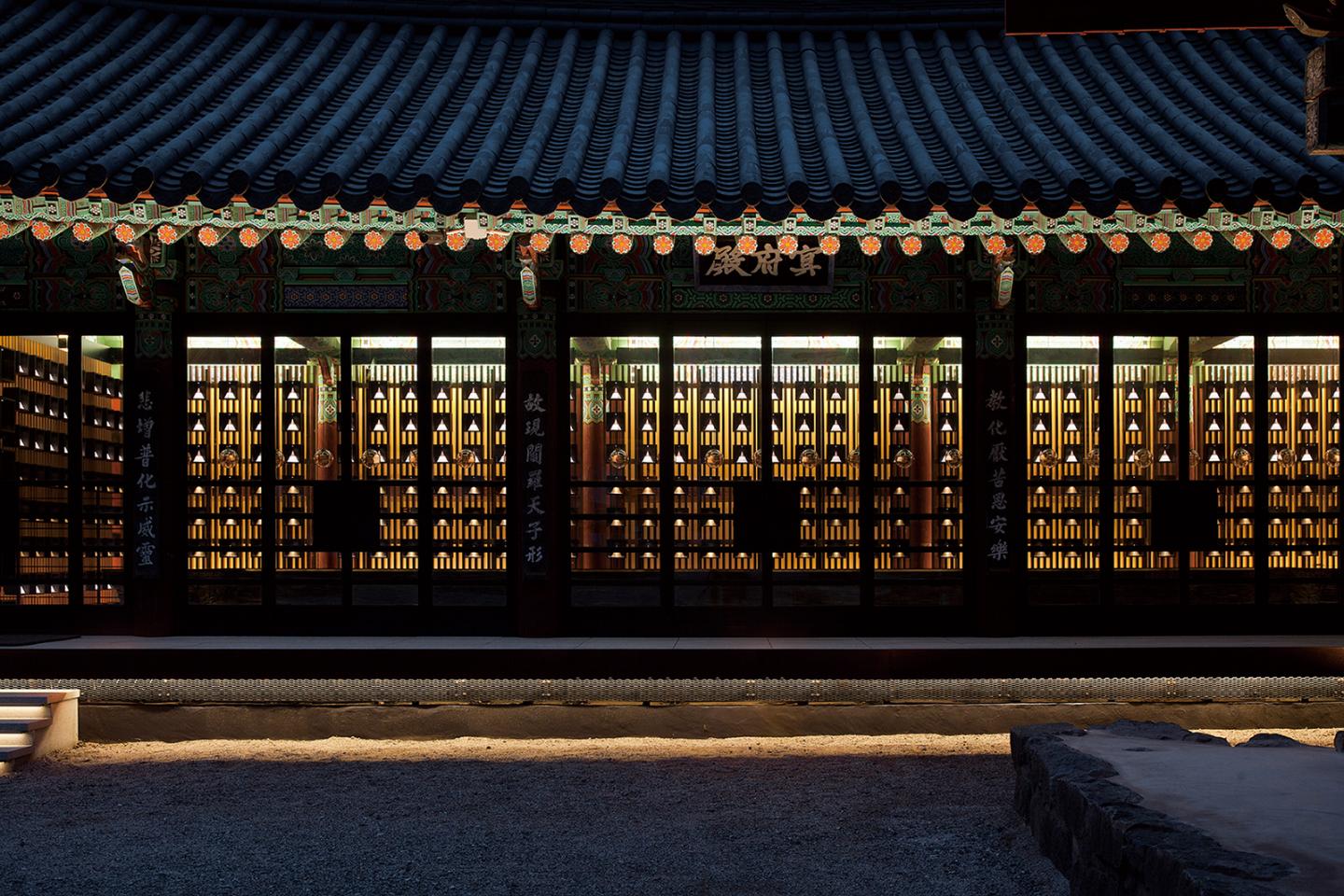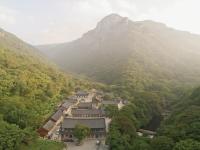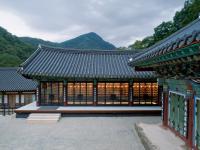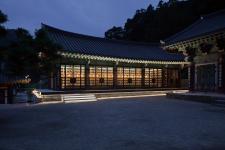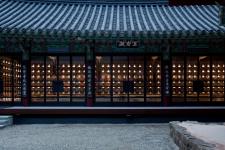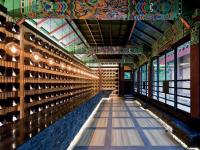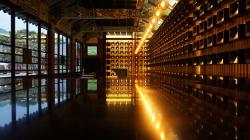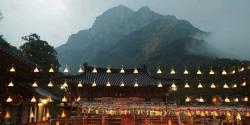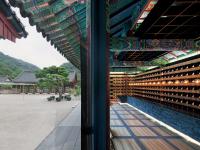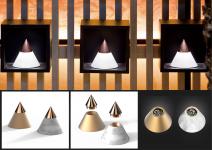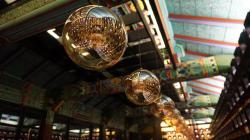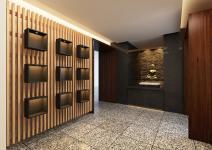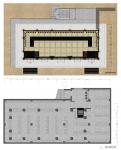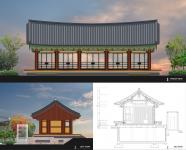Located in the southwestern Jangseong-gun of South Korea, Baekyang-Sa Temple was founded about 1,400 years ago and is one of the five largest Temples in Korea. In this year’s Buddha’s Birthday, the Temple of Afterworld and Charnel House, one of dozens of Buddhist temple buildings in Baekyang-Sa, were reborn as a memorial space named "The Spiritual Healing House" through the re-interpretation on the spiritual and aesthetic perspectives by the architect.
Baekyang-sa's "The Spiritual Healing House," which is received critical acclaim as being aesthetically sublimated at the intersection of tradition and modernity, life and death, memorial and arts fields, is an opportunity to show the new architectural genre and memorial culture of Korean Buddhism.
"The Spiritual Healing House" is designed for two purposes. First, it prays that the souls leaving for the State of Nirvana would be liberated from the burden of the world of suffering and sublimate to the Paradise without the weight of a single grain of dust. It is also designed as a memorial place for the deceased. Design elements borrowed from the early Buddhist Architecture of India, Stupa, more than 500 metaphysical forms of funeral urns were made of aluminum and concrete. The remains of the deceased were transformed into beautiful sariras from the body after the monks died. The sariras were placed in the funeral urns and they were hung on a long wall. All architectural objects including funeral urns, ancestral rites table, staircase, walls, and lighting devices float freely in space without restraining each other. The deck and the stairs outside the building are also designed to make the entire building to look like as if it is floating from the ground with indirect lighting. The traditional temple building was designed to make it impossible to view the outside scenery from the inside. However, this new Charnel House is made with transparent glass to take in the Baekam Mountain, which is a famous mountain in the northern side, to the interior. The Charnel House then becomes a bright and transparent facility that breathes with nature, instead of a previously dark and averted facility.
The "Spiritual Healing House" preserved the traditional multicolored paintwork, a technique which is thousands of years old, and overlaid it with modern metal design elements to express the boundaries between the past and the present.
Go down through the modern glass box doors to enter the underground cellar. There are hundreds of ancestral tablets along the walls and approximately 1000 traditional funeral urns in the underground cellar.
2017
2018
- Location: Jangseong-gun, Korea
- Fuction : Charnel House
- Completion Date: 2018. 5.
- Bldg. Area: 130.9 m2
- Gross Floor Area: 289.28 m2
- Bldg Scale: 1 story below ground, 1 story above ground
- Structure: R.C. + Wood
- Funeral Urns: Aluminum, Concrete, Wood Frame
- Ancestors Rites Tablet: Steel & Aluminum
- Door: Steel + Glass
- Lighting: LED, Optical Fiber Lightings
Project Manager: Kyeong Sik Yoon, Architect
Client: Baekyangsa Temple - Great Buddhist Monk Jisun, Chief Buddhist Monk Tojin,
CM: Monk Hwajin
Architectural Design: KACI International - Yoonjung Kim
Contractor: Woungki Hong,
Funeral Urns Design: Kyuho Song, Joongu Kim
Ancestors Rites Tablet Design: Kyeongsik Yoon, Kyuho Song
St'l Door: Mos, Mingon Kim
Glass: AMR Inc., Jonghan Lee
Interior Design: SIA, Gyeongsuk Hwang
Electrical Installation: Sejun Elec., Jungju Lee
Photograph: Jongoh Kim
